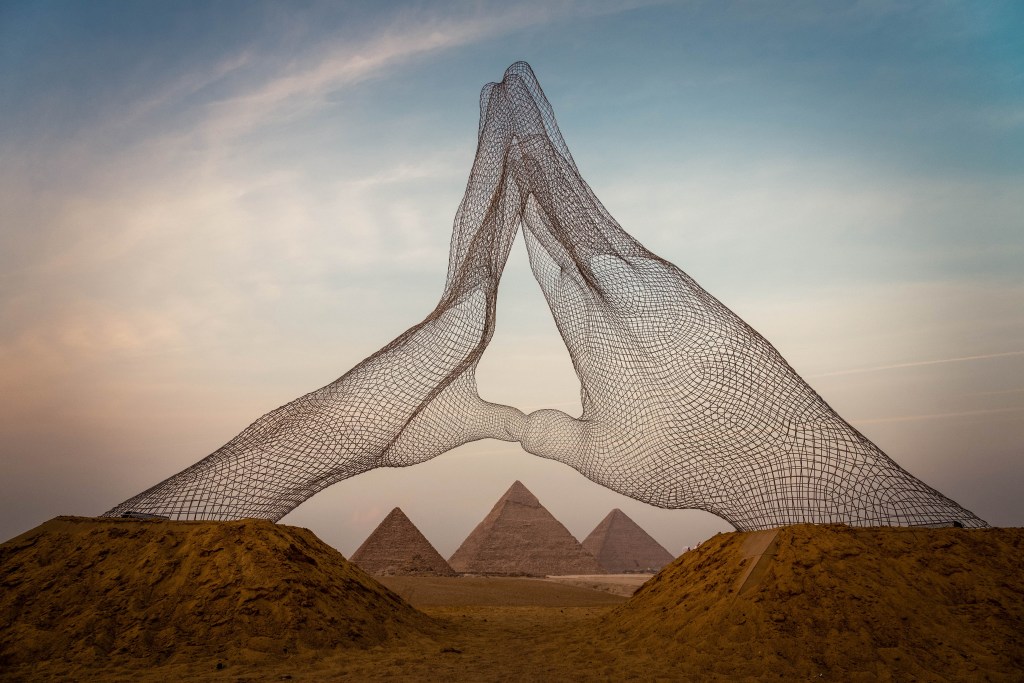Prepare yourself for a parade of imagination: the winners of the 2023 Wiki Loves Monuments photo contest have arrived.
Wiki Loves Monuments is best known for being the world’s largest photo contest. It highlights humanity’s cultural heritage through the buildings, structures, and other assets that have gained importance due to their artistic, historic, political, technical, or architectural significance.
Since the contest’s first edition, held in the Netherlands in 2010, Wiki Loves Monuments has inspired the uploading of over 3 million images to Wikimedia Commons, the freely licensed media repository that supports Wikipedia and other websites. You (yes, you!) can use those images for just about any purpose with only a couple stipulations.*
In 2023, about 200,000 images were uploaded from over 4,700 photographers in 46 countries who participated in the contest. The 15 international winners were found in 12 of those countries, and you can see them all below.
—
It takes a bold and courageous artist to engage with something known and celebrated around the world—but that’s just what Mona Hassan Abo-Abda did. That vision brought them first place in the 2023 Wiki Loves Monuments photo contest.
Abo-Abda took their photo (pictured above) in 2021 after traveling to see the art exhibition “Forever is Now“, then in its first year. They chose to frame the Giza pyramids, the last remaining wonder of the ancient world, through the touching hands of Lorenzo Quinn’s sculpture Together.
“Humans are obsessed with time, and yet there are places on Earth where time stands still,” Abo-Abda said. But during the COVID-19 pandemic, “we missed an essential part of what makes us human. Together wishes to represent that timeless human emotional journey in the place on Earth where time has become relative as a testimonial to living the moment.”
The photo competition’s jury praised Abo-Adba’s choice of “angle and distance,” which they believed “were very well chosen to create a balanced and proportional scene.”
Second place
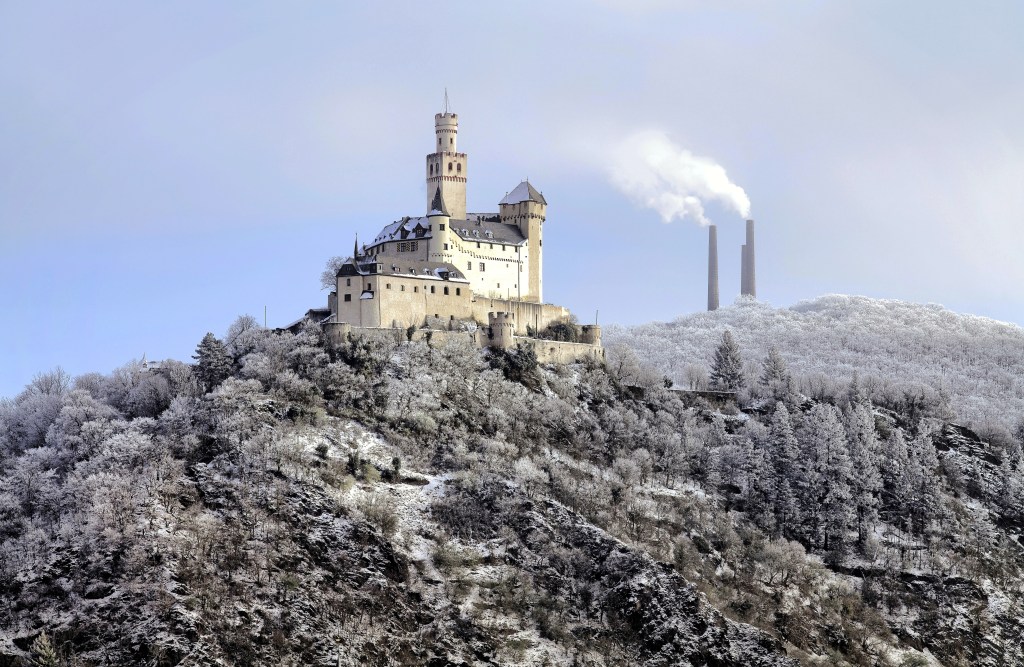
Photo by Rolf Kranz, CC BY-SA 4.0
The second-place winner was captured in a very different place from the Egyptian desert: a cold German winter. The Marksburg is a castle and a key part of the Rhine Gorge UNESCO World Heritage Site.
“For me, this one photo connects almost a thousand years of history of the Middle Rhine Valley”, photographer Rolf Kranz said. “Marksburg castle was built as early as the 12th century and is the only hilltop castle on the Middle Rhine that has never [been] destroyed. Behind it you can see three significant smoking chimneys of the Braubach lead and silver smelter, [which] were erected [around] 1900.”
Third place
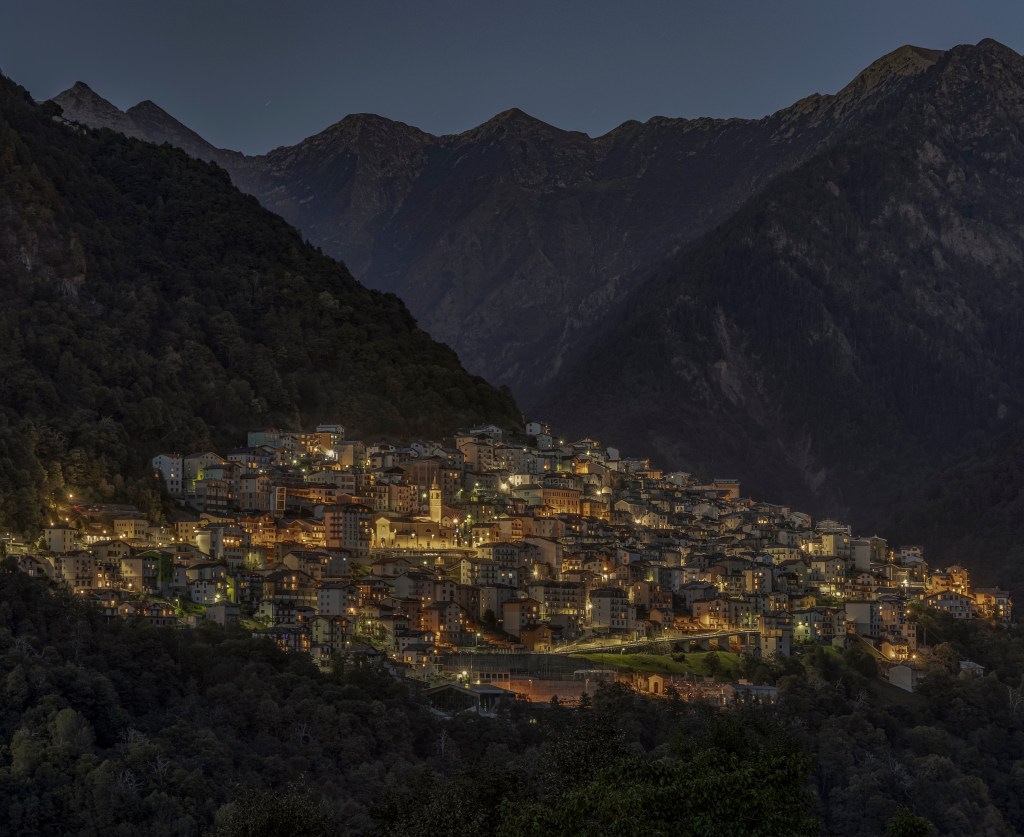
Photo by Maurizio Moro5153, CC BY-SA 4.0
Photographer Maurizio Moro5153 drove for an hour and half to find a location that allowed them to create a single interwoven shot of the idyllic northern Italian village of Premana underneath a wedge of hulking mountains looming over it. The effort won them third place. The jury called out the “warmth and power” displayed in the photo’s contrast between the near-dark sky and lit-up village.
Fourth place
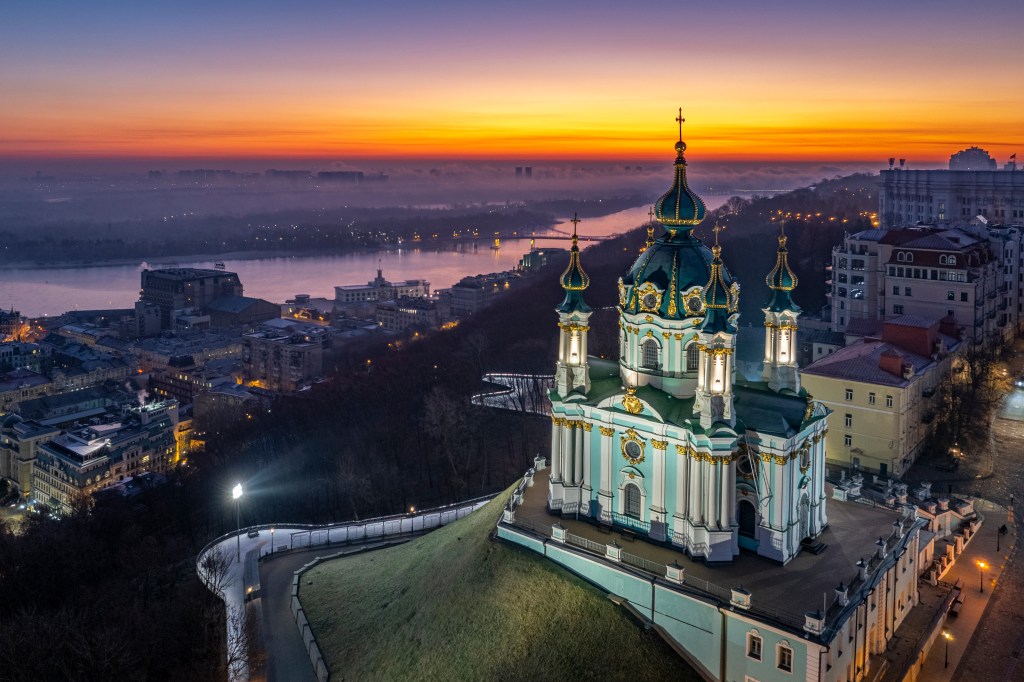
Photo by Maksym Popelnyukh, CC BY-SA 4.0
Photographer Maksym Popelnyukh wanted to find a different way to portray Kyiv’s St. Andrew’s Church, a commonly photographed Elizabethan baroque landmark in Ukraine. They did so by getting to the location at 5 a.m., before most of the city was awake. Getting the right shot was so complicated that it took three times to get right. Their perseverance was rewarded with an award for fourth place.
“This is my way of inviting the world to look at Ukraine anew, through the lens of my camera, and to show the inexhaustible diversity and beauty it holds,” Popelnyukh said.
Fifth place
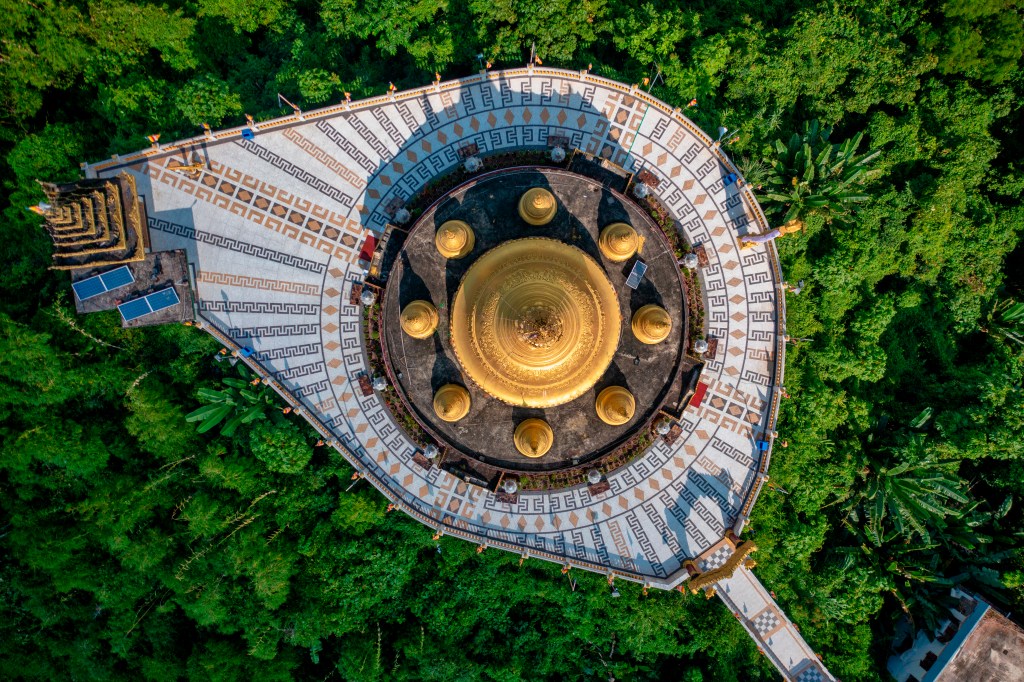
Photo by Azimronnie, CC BY-SA 4.0
Coming in fifth place in this year’s contest is Azim Khan Ronnie’s aerial photo of Buddha Dhatu Jadi, a Buddhist temple located in southeastern Bangladesh. This particular temple is well-known for its golden spire, but Jadi chose to capture it from an unusual angle: directly above. Their work in composing the shot, finding a balance between form and color, and choosing a time of day that would accentuate the shadows led to their award. (Another one of Ronnie’s photos placed tenth, and you can find that below.)
Sixth place
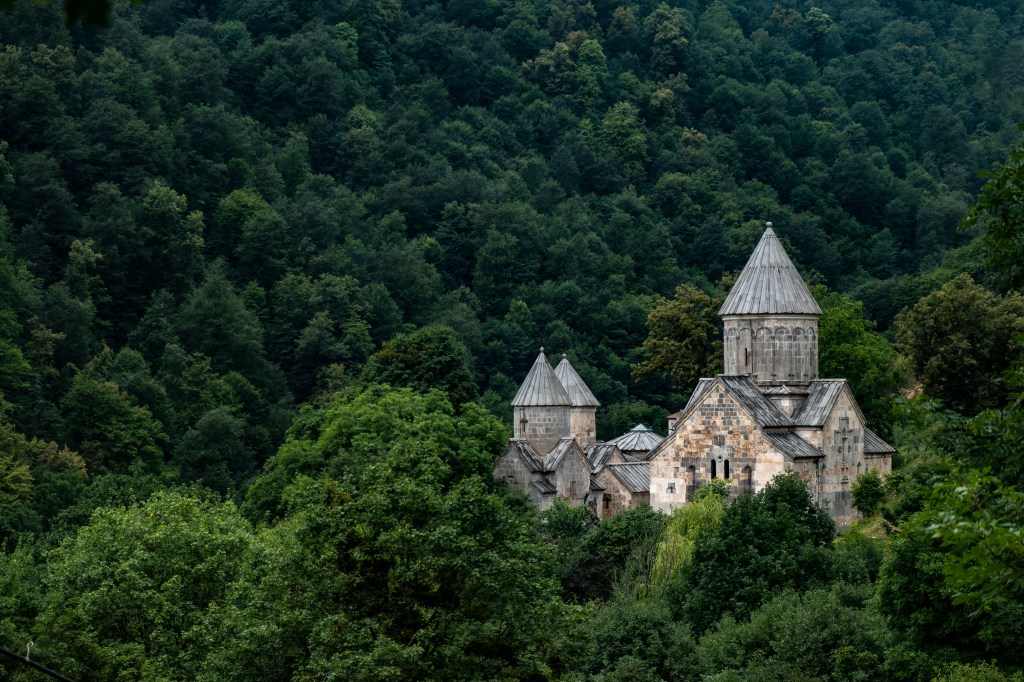
Photo by Vladimir Pankratov, CC BY-SA 2.0
The 700-year-old Haghartsin Monastery, nestled in the mountains of north-central Armenia, is seen here in a photo from Vladimir Pankratov. Pankratov had been to the monastery before, and it made for an excellent place to start a hike up Mount Dimats with their son. While there, they took a few photos—including this sixth-place winner, which was taken from a vantage point in a nearby chapel. The international jury called the photo “an example of human ingenuity emerging from the earth, like trees in the middle of the forest”.
Seventh place
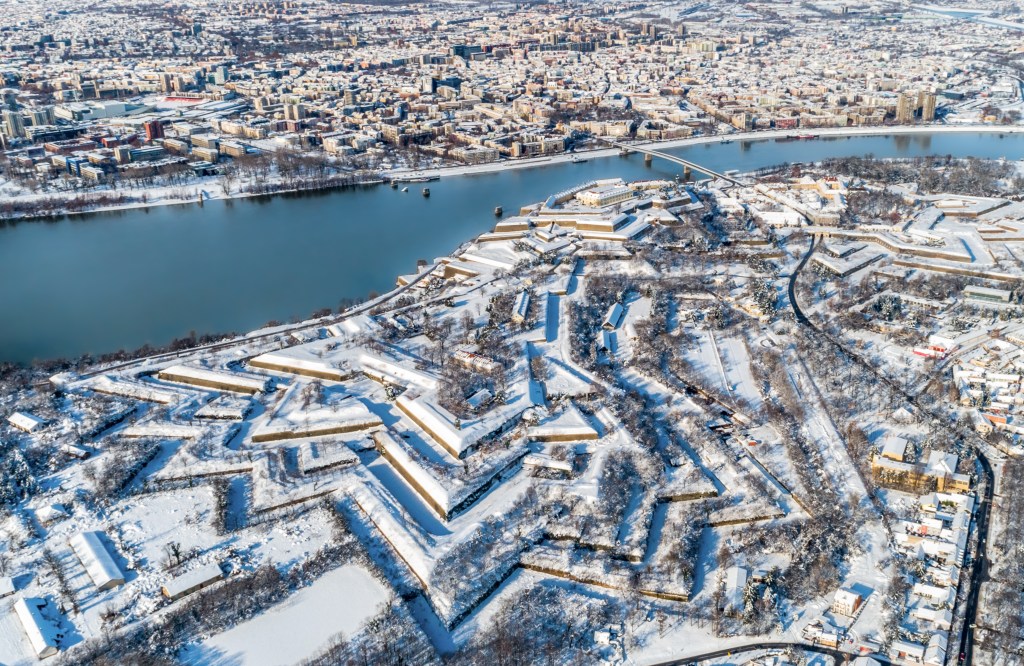
Photo by Valekd, CC BY-SA 4.0
This aerial view of Serbia’s Petrovaradin Fortress clearly shows the fortress’ deliberate positioning over the town and river, along with the elaborate lines of zig-zagging walls constructed to hold out against an enemy even in the age of cannons. The international jury commended photographer Valekd for the decision to capture the fortress in winter, which they said gave the resulting photo a “monochrome” look that highlighted the fortress’ various levels.
Eighth place
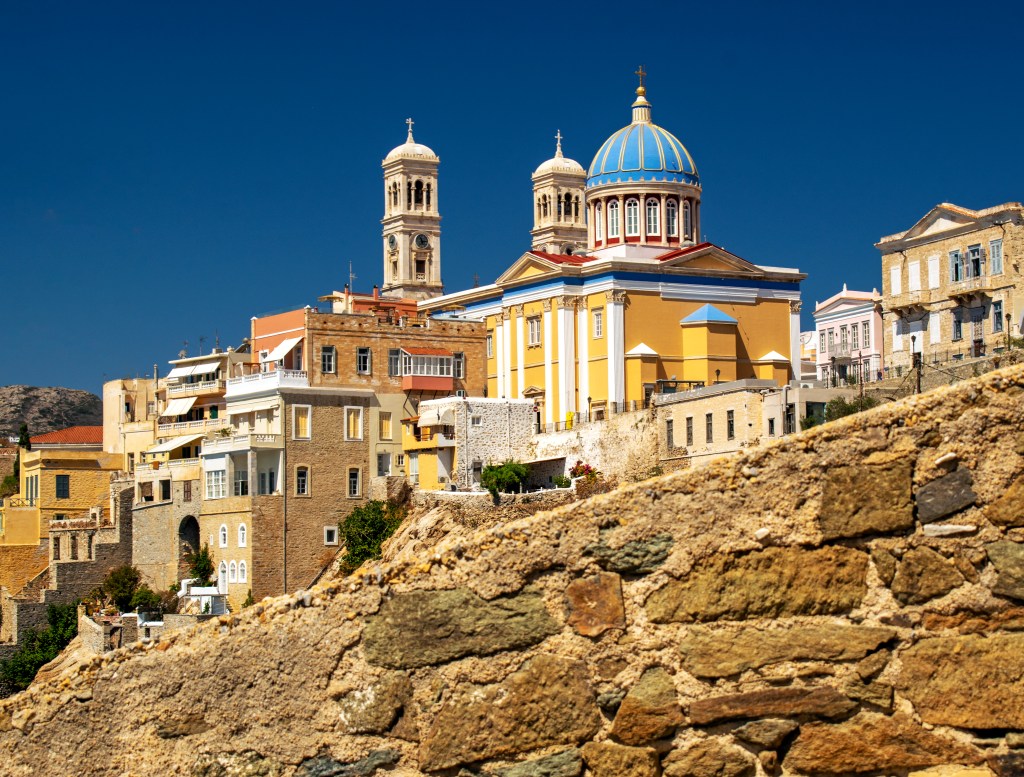
Photo by Αλεξανδρής Αλέξης, CC BY-SA 4.0
Out on a summer holiday to the Aegean Greek island of Syros, photographer Αλεξανδρής Αλέξης was walking through narrow alleyways when they happened on this viewpoint of the Agios Nikolaos Church. They captured the church’s famed blue dome, along with its two towers, and framed them above what looks to be an aging stone wall. The jury loved the photo’s composition.
Ninth place
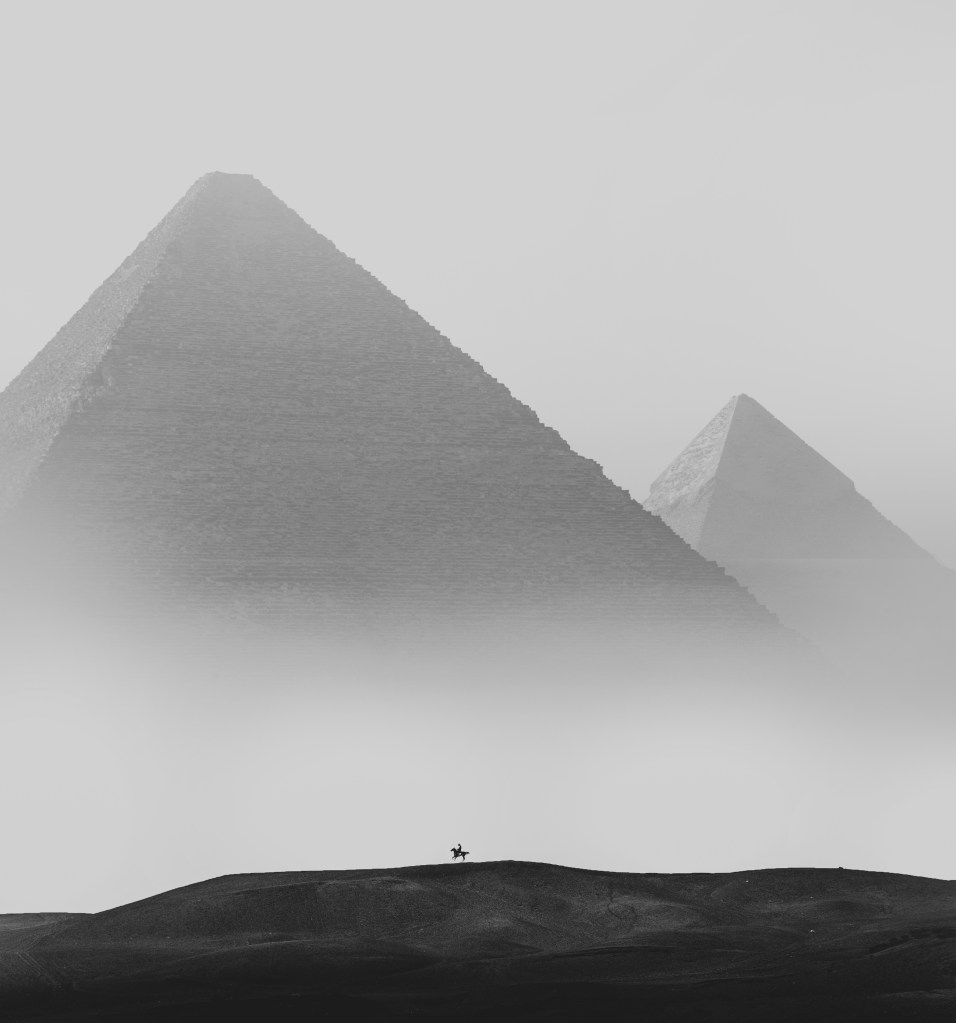
Photo by Abdelrahmannr, CC BY-SA 4.0
We are headed back to Giza’s pyramids for photographer Abdelrahmannr’s stunning combination of the ancient monuments juxtaposed against a solitary horse and rider. The photo clearly shows the massive scale of the pyramids, which are often viewed through photos taken at long distances, and the Wiki Loves Monuments team said that “it is a breathtaking scene that captures the awe and wonder of these timeless monuments.”
Tenth place
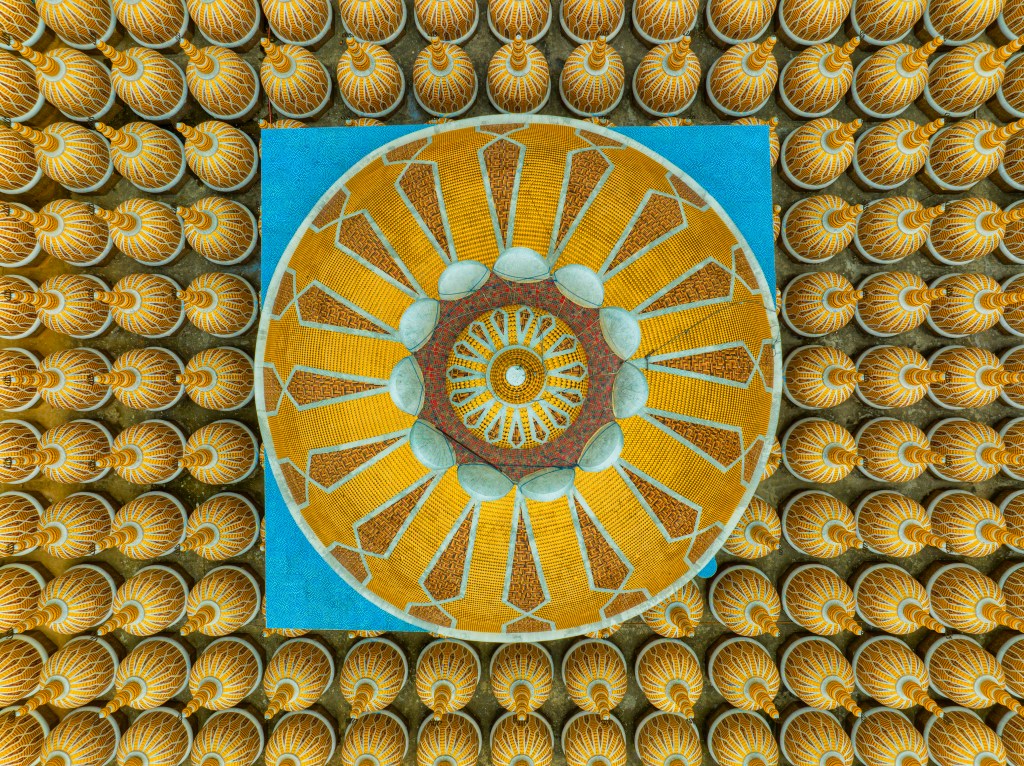
Photo by Azimronnie, CC BY-SA 4.0
For Azim Khan Ronnie’s tenth-place winning photograph, they crafted a top-down aerial view that could have come straight out of a movie. But what’s most valuable about this perspective is that it gives us the ability to see the detailed work that many artisans have put in over the years that Bangladesh’s 201 Dome Mosque has been under construction, especially the roof of the 81 foot (25 m) central dome. As you might have guessed by the name, they have also constructed two hundred 17 foot (5.2 m) domes alongside it. (Another one of Ronnie’s photos placed fifth, and you can find that above.)
Eleventh place
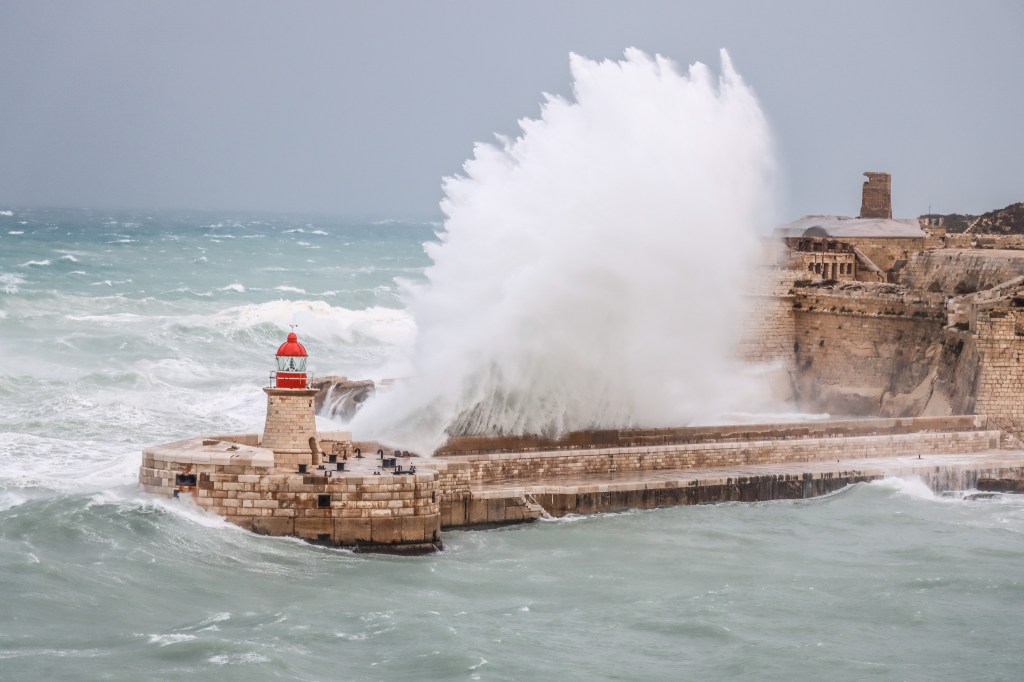
Photo by Bonavia92, CC BY-SA 4.0
Right at the entrance to Malta’s Grand Harbour stands Fort Ricasoli and this accompanying breakwater, seen here fulfilling its purpose of protecting the harbor from the worst of what the sea has to throw at it. This was one of many photos Bonavia92 took that day while seeking the perfect moment, and they ended up with a photo that they called “one of a kind”. It was the first photo they have ever submitted into any competition.
Twelfth place
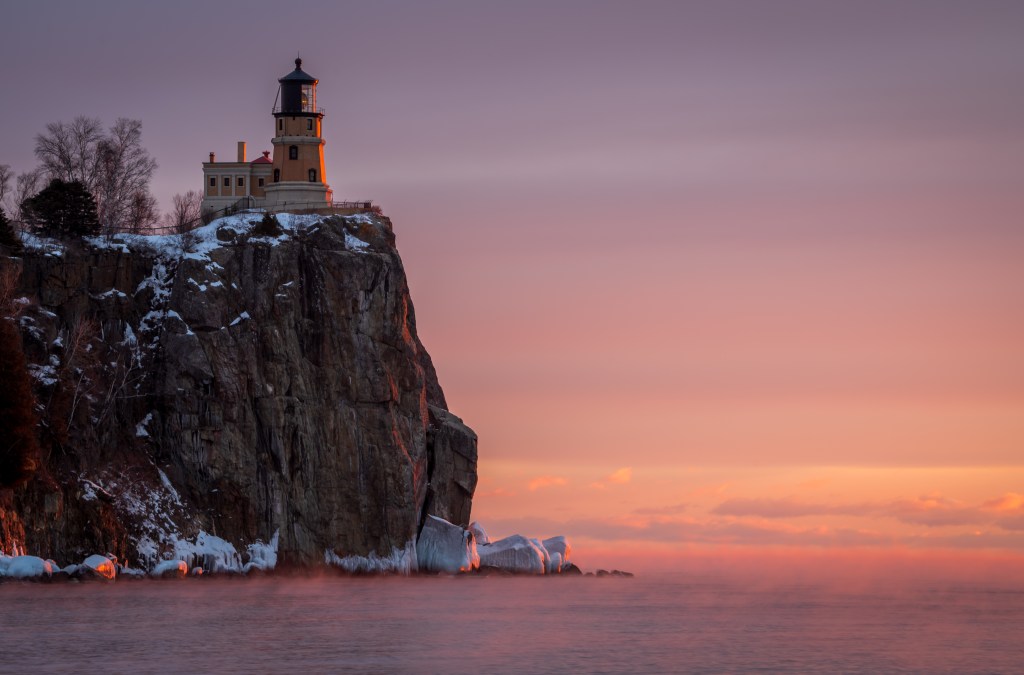
Photo by MichaelDPhotos, CC BY-SA 4.0
Lighthouses are a favorite subject of photographers, and Split Rock Lighthouse in the northern United States is known for being one of the country’s most beautiful examples of the type. MichaelDPhotos got up early on a cold January morning to capture the sight at dawn. The timing allowed the building to be “bathed in the soft pastel hues of dawn”, as they put it.
Thirteenth place
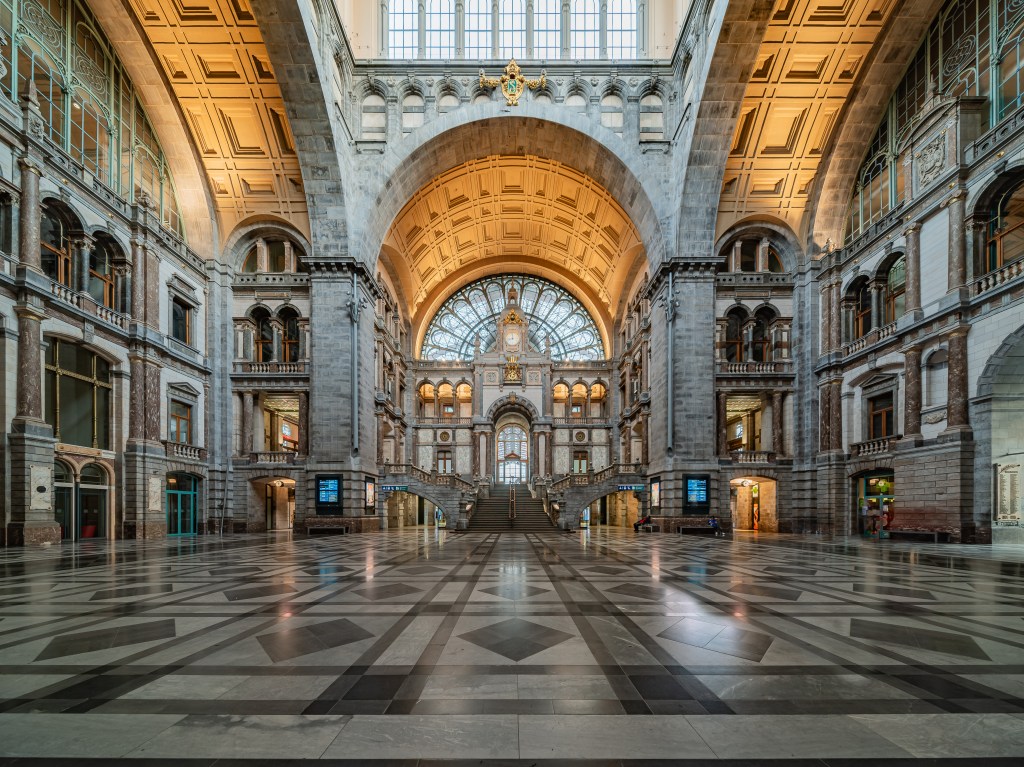
Photo by T meltzer, CC BY-SA 4.0
The eclectic design of Belgium’s Antwerpen-Centraal railway station has meant that architects have struggled to identify the structure with any one style. Yet, that does not detract from it being “widely regarded as the finest example of railway architecture in Belgium”, as described on Wikipedia. A truly fascinating part of photographer T meltzer’s shot of the station’s central hall is the near-total lack of people in the photo.
Fourteenth place
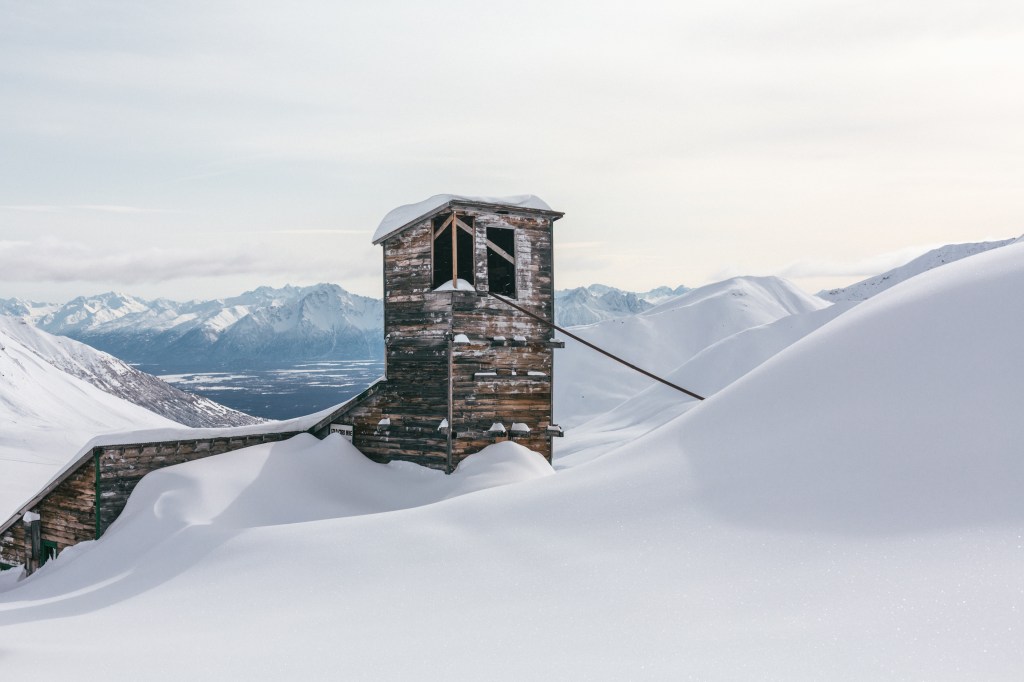
Photo by Will Koeppen, CC BY-SA 4.0
This image exhibits a memory of the Alaskan Gold Rush in the history of the United States: the Independence Mine complex. Today, it’s a state park. Alaska is known for its harsh winters, and longtime Wikipedia editor Will Koeppen’s image shows the snow blown and piled next to one of the site’s remaining buildings. Koeppen lives in the area and is so familiar with this historical site that they didn’t find the photo all that remarkable. The jury disagreed, and to Koeppen’s delight they awarded it with fourteenth place. Koeppen reflected that its success “reminds me that we, as photographers, can’t always predict what specific photo is going to land with a broader audience. We all have our own preferences, biases, memories or emotions that a photograph can evoke.”
Fifteenth place
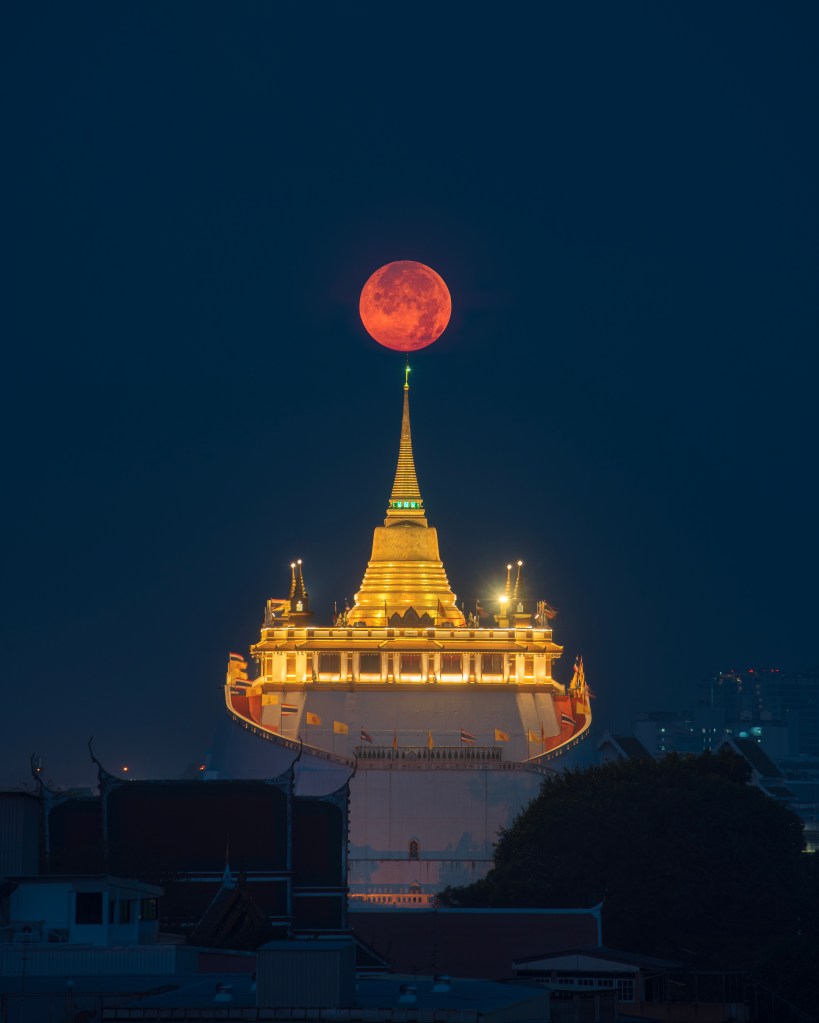
Photo by Sitthipolp, CC BY-SA 4.0
Careful positioning was required to capture this low-slung full moon over Wat Saket in Bangkok, Thailand. The site has existed in some form for hundreds of years, but the modern temple was finished in the 20th century. The effort and care put into the photograph brought photographer Sitthipolp fifteenth place in the 2023 Wiki Loves Monuments photo contest.
—
To see more images like this, have a look at all of the national Wiki Loves Monuments 2023 winners, or check out this year’s winners of Wiki Loves Earth, a contest focused on our planet’s natural areas.
By Ed Erhart, Communications Specialist at the Wikimedia Foundation
—
*Note: Please make sure to follow each image’s copyright tag. All of the images above, for instance, are available under the Creative Commons CC BY-SA 4.0 license, meaning that you are free to share them for any reason so long as you give credit to the photographer and release any derivative images under the same copyright license.
